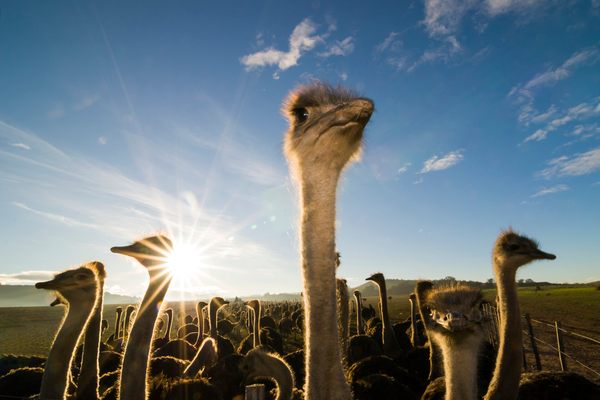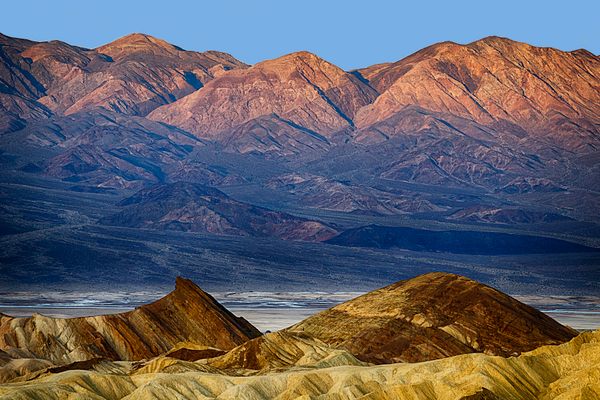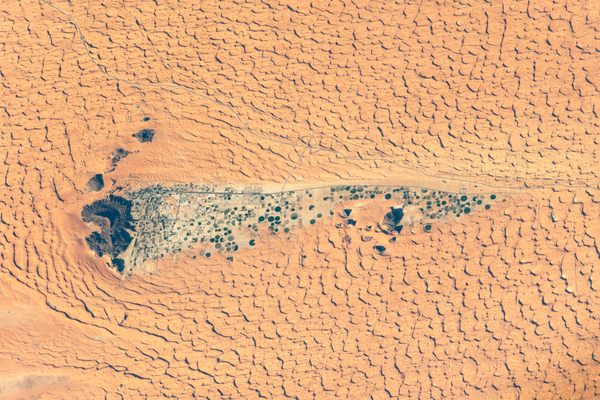The Goofy Worm Lizard That Beats the Heat by Never Coming to the Surface
It has claws like a mole, eyes that look like poppy seeds, and a great strategy for evading predators and filling up on prey.

How do animals survive in harsh environments? This week, we’re celebrating some extreme desert-dwellers.
Wind carries cool Pacific air across the desert on Mexico’s Baja California peninsula. Here, a smattering of cacti and succulents get plump and green in the sun. It’s a pretty scene, but the Mexican worm lizard rarely gets to see it.
That’s because this little creature, technically known as Bipes biporus, has adapted to life underground. Our buddy is an amphisbaenian—a group of generally legless, eyeless squamates. It’s one of the few species that does have legs, and B. biporus’s are crowned with claws.
Those claws aren’t sharp enough to “tear you up” if you happen to be holding a worm lizard in your hand, says Sara Ruane, a biologist at Rutgers University-Newark who specializes in snakes, but they likely help the creature get around its subterranean bunker. Imagine an earthworm crossed with a mole, and you’ll start to get the picture. But the claws aren’t even close to being the wackiest thing about this creature.
The worm lizard looks a bit like stretchy, Pepto-Bismol colored putty, and its body is ribbed with little rings known to herpetologists as annulations. It has tiny, beady little eyes, like ticks or poppy seeds or little dots drawn on with a fine-tipped pen. (These actually aren’t much help in the dark. Former University of Texas at Arlington herpetologist Carl Franklin once told Wired that worm lizards often suss out food by picking up chemosensory cues with their tongues.) All in all, worm lizards are so strange-looking that the paleontologist and science writer Darren Naish has recalled that his first impression of one was something like, “What the hell?”
No matter. Down below—far from the sun, far from swooping predators, far from pretty much everything other than delectable insects or other little morsels—worm lizards have everything they need. If you retrace B. biporus’s family tree, Ruane says, you’d find a legged ancestor that “was a more typical lizard-looking animal that was a surface-dweller.” Over many generations, this species evolved to live underground, where it evades birds, snakes, and other predators, and exploits untapped resources, with access to termites, ants, and other invertebrates that surface-dwelling lizards can’t catch as easily. There, Ruane says, “you can just bust on through with little mole feet and start eating whatever you want.”
The worm lizard burrows through sand and loose soil, and likely varies the depth of its digging based on the time of day and its thermoregulation needs, Ruane says. When mornings are cool, it probably stays closer to the surface, before descending deeper as the sun bakes overhead. They sometimes turn up around plant roots, or just beneath boards or other things lying on the ground. In any case, they’re infrequent visitors to the surface: Reptiles magazine has reported that worm lizards only venture above the ground when rains flush them out.
Researchers are still a bit puzzled by this desert-dweller. It’s not that they’re rare—in fact, it’s thought that they might be the most common lizard in some of the places where they’re found, Ruane says—but just that researchers don’t know exactly what they’re up to. Scientists have a pretty good handle on their diet, Ruane adds, but there’s much to learn about their behaviors around mating, and more. Tagging or genetic research might help illuminate migrations and range. Even from a distance, though, it’s clear that the subterranean lifestyle looks good on B. biporus.



















Follow us on Twitter to get the latest on the world's hidden wonders.
Like us on Facebook to get the latest on the world's hidden wonders.
Follow us on Twitter Like us on Facebook